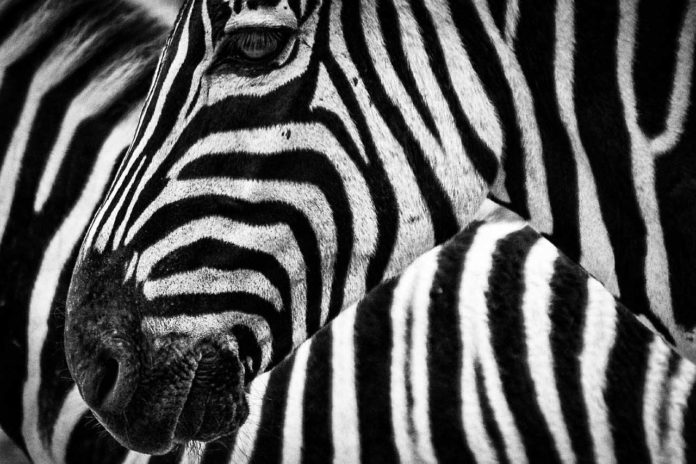Many theories have been proposed on the zebra’s stripes, including avoiding predators, better heat regulation and a social function, yet there is still no agreement between scientists.
Now, in a new study, scientists debate that zebras’ stripes are used to control body temperature after all.
According to scientists, it is the special way zebras sweat to cool down and the small-scale convection currents created between the stripes which aid evaporation, while the previously unrecorded ability of zebras to erect their black stripes is a further aid to heat loss. These elements are essential to get detail insights on how the zebras’ unique patterning helps them manage their temperature in the heat.
For this study, scientists assessed the natural habitats of zebras and investigated the role of their strips in controlling temperature. Scientists gathered the field data from two live zebras, a stallion and a mare, together with a zebra hide draped over a clothes-horse as a control, in Kenya.
Scientists found that there is a temperature difference between those black and white strips as the day heats up. Whilst this difference stabilizes on living zebras during the middle seven hours of the day, with the black stripes 12-15oC hotter than the white, the stripes on a lifeless zebra hide continue to heat up, by as much as another 16oC.
It suggests there is an underlying mechanism to suppress heating in living zebras. It is, therefore, the way the zebra stripes are harnessed as one part of their cooling system, rather than just their contrasting coat color, that is key to understanding why these animals have their unique patterning.
Through this study, scientists also propose that the differential temperatures and air activity on the black and white stripes set up small-scale convective air movements within and just above the stripes, which destabilize the air and the water vapor at the tips of the hairs.
In addition, scientists observed one more extraordinary quality of zebras: they can raise the hair on their black strips while the white ones remain flat. The reason behind this is the heat of the day.
Scientists noted, “The raising of black hairs during the heat of the day, when the stripes are at different temperatures, assists with the transfer of heat from the skin to the hair surface and conversely, when the stripes are at the same temperature in the early morning, and there is no air movement, the raised black hairs will help trap air to reduce heat loss at that time.”
“These three components- convective air movements, latherin-aided sweating and hair-raising—work together as a mechanism to enable zebras to wick the sweat away from their skin so it can evaporate more efficiently, to help them cool down.”
Alison Cobb, lead author of the new paper says: “Ever since I read ‘How the Leopard Got His Spots’ in Kipling’s Just So Stories at bedtime when I was about four, I have wondered what zebra stripes are for. In the many years we spent living in Africa, we were always struck by how much time zebras spent grazing in the blazing heat of the day and felt the stripes might be helping them to control their temperature in some way.”
“My early attempts forty years ago at testing this hypothesis involved comparing the temperatures of water in oil drums with differently colored felt coats, but it seemed to me that this was not a good enough experiment, and I wanted to see how the stripes behaved on live zebras.”
“Steve, the man who later became my husband and co-author, teaching conservation biology in the University of Nairobi, had a student working with zebras, who said he could calm them down in their crush by brushing them with a long-handled broom.”
“This gave me courage in 1991 to ask permission to go into the Animal Orphanage in Nairobi National Park to see if I could tame one of the wild zebras in the paddock by brushing it with a dandy brush.”
“Apart from its capture, it had never been touched by a human. To my immense pleasure, it found this tickling very agreeable and as the days went by it gradually allowed me to brush it all over (see photograph). Two years later I came back to Nairobi and walked into the paddock with the brush. The same zebra mare lifted her head, looked at me hard, and walked up to me to be brushed again.”
The findings have been published this month in the Journal of Natural History, the scientific publication of the British Natural History Museum, by amateur naturalist and former biology technician, Alison Cobb and her zoologist husband, Dr. Stephen Cobb. Together, they have spent many years in sub-Saharan Africa, where he has directed environmental research and development projects.
